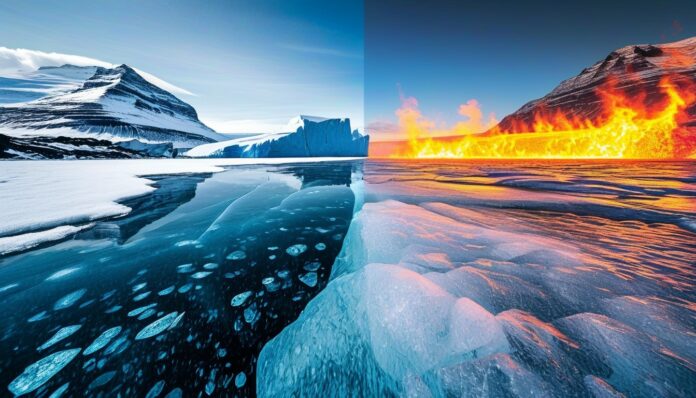Some people cannot tolerate heat, while others cannot bear the cold, but have you ever wondered—which is more dangerous? While it might seem that there’s no escape from heat, whereas you can always bundle up in the cold, the reality is quite different.
Scientists provide a clear answer: extreme cold poses a greater danger than extreme heat. Death from extreme cold occurs 17 times more frequently than death from extreme heat. Studies have found that sudden temperature drops are the cause of death in about 0.86% of people.
How Death from Hypothermia Occurs
If you find yourself in cold conditions with no hope of shelter or warmth, here’s what happens:
- 36.6 – 35°C: When your body temperature drops to 36°C, the muscles around your neck and shoulders begin to contract—this is called pre-convulsive muscle tone. Your body’s receptors send a signal to the hypothalamus, which triggers the narrowing of capillaries on the surface of your skin, causing your hands and feet to ache from the cold. After about 45 minutes, your body temperature drops to 35°C. Your body starts shaking violently as your muscles contract rapidly to generate warmth.
- 35 – 32°C: As your body temperature drops below 35°C, your metabolic rate decreases by 3-5% with each degree. Below 34°C, you may start losing memory and mental clarity, no longer understanding where you are or what you’re doing. Often, people fall into the snow at this stage and stop moving. Below 33°C, apathy sets in, and below 32°C, you enter a stupor.
- 32 – 30.5°C: In this zone of extreme hypothermia, the body stops trying to warm itself through shivering. Blood thickens, and oxygen consumption decreases. The constricted blood vessels in the extremities force a large amount of fluid to the kidneys. By this time, you no longer recognize anything around you. Between 31 and 30°C, you might not even recognize familiar faces.
- 30.5 – 29.5°C: At this stage, the electrical impulses from your cooled nerve endings to your heart become erratic, and your heart pumps only about two-thirds of its usual volume. Oxygen deprivation can cause hallucinations, and death typically occurs around 29.5°C.
Another Fact About Cold
Cold air is often thought to be harmful to health, but this isn’t entirely true. While the risks depend on the duration and conditions of exposure, cold air, which contains 30% more oxygen in winter, can benefit skin health. It may even alleviate symptoms of bronchitis or pneumonia, provided the air is dry and not damp.
How Death from Heat Occurs
A body temperature exceeding 43°C is fatal for humans. Protein denaturation and irreversible cellular damage start at around 41°C, and exposure to temperatures above 50°C for just a few minutes can kill cells. Heatstroke occurs when the body’s internal temperature surpasses 41°C, disrupting the body’s thermoregulation. Early signs include flushed skin, headaches, dizziness, and irritability. As body temperature rises above 42°C, death from brain damage becomes likely.
Human physiology relies on thermoregulation, controlled by the hypothalamus. In normal conditions, the hypothalamus is set at 37°C, but fever or heat exposure can shift this set point. The skin cools down through sweating, controlled by adrenaline, and the body can lose up to 12 liters of water a day due to excessive sweating in extreme heat, leading to dehydration and salt loss, which can cause painful muscle cramps. If this condition continues, the risk of permanent organ damage or death increases.
Conclusion
Both extreme heat and cold can be deadly, but cold poses a greater risk, with a much higher incidence of death from hypothermia. It’s important to protect yourself by dressing appropriately and avoiding prolonged exposure to extreme temperatures.
Take care of yourself! Avoid extreme heat and cold exposure.
